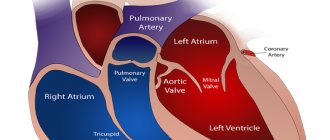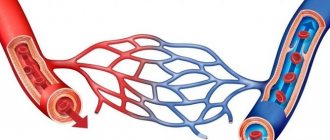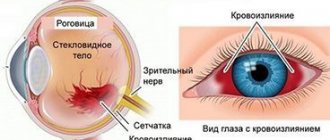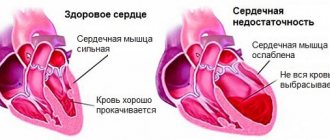Hypovolemia: a dangerous condition that requires immediate attention
What do we know about hypovolemia?
Hypovolemia is a condition when, as a result of fluid loss, the volume of blood that circulates in the human body decreases.
This violation poses a serious threat to the health and life of the patient. A severe degree can lead to hypovolemic shock and the development of multiple organ failure. Therefore, as a rule, the patient requires immediate medical attention: hospitalization and intensive care. Treatment is carried out in a hospital setting.
In rare cases, hypovolemia is caused not by the loss of fluid, but by its redistribution in the tissues of the body. At the same time, the filling of blood vessels with blood is reduced. This phenomenon is called relative hypovolemia. Blood loss and dehydration are absolute.
Reasons and mechanism of formation
The pathological hypovolemic process is based on severe dehydration.
Leads to it:
- Vomiting, characteristic of withdrawal syndrome after binge drinking.
- Diarrhea, with the help of which the body cleanses itself of alcohol toxins.
- Liver diseases characteristic of alcoholism (toxic hepatitis and cirrhosis). In this case, non-functional leakage of plasma into the intercellular space occurs due to a decrease in the oncotic pressure of the blood.
- Insufficient intake of fluid and protein into the body.
Hypovolemia is preceded by increased venous and hydrostatic pressure in small arteries, reflecting the negative influence of factors predisposing to a painful condition. Secondarily, the permeability of the vascular wall increases. Sweating of blood through arteries and veins leads to its general deficiency.
The body tries to compensate by:
- Producing the required amount of plasma.
- Slowing venous return.
- Spasms of small vessels.
The protective reaction allows you to maintain the activity of the brain and heart in a relatively normal state for some time and avoid circulatory complications.
What causes the condition
Most cases are associated with severe dehydration, blood loss, and large burns.
Dehydration can be caused by:
- repeated vomiting and diarrhea, excessive sweating
- insufficient fluid intake,
- taking medications, such as diuretics.
Hypovolemia that is caused by loss of plasma rather than blood is called polycythaemic.
Blood loss occurs as a result of injury, surgery, or internal bleeding. Blood loss associated with internal bleeding is considered especially dangerous, since it is not always possible to immediately determine where it is localized.
Massive blood loss is caused by:
- gastrointestinal bleeding,
- rupture of the fallopian tube during ectopic pregnancy,
- rupture of an aortic aneurysm.
A general decrease in blood volume is called normocythemic hypovolemia.
Symptoms
The condition can be recognized by the following signs:
- dry mucous membranes
- pale skin
- decreased skin turgor
- rapid breathing
- lowering blood pressure levels
- tachycardia
- anxiety, confusion
- weak pulse (due to decreased cardiac output)
- thirst
- dizziness
- lack of urination for a long time.
Acute hypovolemia leads to an emergency condition - hypovolemic shock, which can result in coma.
Content:
- Causes and mechanism of development
- Classification
- Signs of hypovolemic disorder
- Treatment of hypovolemia
Hypovolemia is a decrease in blood volume with the development of alcohol withdrawal syndrome. This process occurs due to the recombination of fluid, due to its transition from the venous bed into the cells and the space between them. This phenomenon occurs during the accumulation of toxic substances inside tissues due to dysfunction of the enzyme system, coronary artery disease, and poor functioning of organs. In addition to perfusion problems, a decrease in circulating blood volume (CBV) is manifested by an inadequate ratio of systolic and diastolic blood pressure and a drop in cardiac output. Developing acute pathology is life-threatening and requires immediate medical attention.
Diagnostics
The main means of establishing a diagnosis is examination and interview (if possible) of the patient.
If hypovolemia is caused by visible trauma, large-area burns, its diagnosis is not difficult.
If a patient is suspected of dehydration or internal bleeding, the patient is sent for a clinical and biochemical blood test, a urine test, which will determine whether there is a change in the water-electrolyte balance.
Also, to clarify the diagnosis, the doctor performs CT, X-ray, ultrasound and endoscopy of organs in which bleeding may develop.
Hypovolemia in children
Danger of condition
The child's body is not sufficiently adapted to compensate for fluid deficiency. This feature should be taken into account when hypovolemia is suspected, since a state of shock in a child can occur much faster than in an adult. This is even more important the younger the child is. Thus, in children up to one year old, the ductus arteriosus may remain open, which, when fluid or blood is lost, actually deprives the lungs of blood supply. Therefore, the issue of hospitalization of the child is resolved immediately.
Causes
In newborns, hypovolemia can develop due to blood loss through the placenta, internal bleeding as a result of injury, or fluid accumulation in the abdominal or pleural cavity.
In older children, in addition to blood loss, the condition is caused by uncontrollable vomiting and diarrhea due to intestinal infections and intoxication; non-compliance with drinking regime.
Treatment
Treatment is prescribed based on the patient's condition.
Mild degrees require fluid replacement (drip, intravenous).
If the cause is injury, the first thing to do is stop the bleeding. Then restore normal hemodynamic parameters and breathing, while simultaneously treating the injury and pain relief for the patient.
Significant blood loss requires transfusion of plasma, red blood cells, platelets, and donor blood. Further therapy is aimed at preventing thrombosis, associated infections, and preventing renal dysfunction.
Signs of hypovolemic disorder
Symptoms of the disorder depend on its severity.
In the practice of narcology, the following stages of hypovolemia are distinguished:
- Easy. Minor fluid losses (up to 20% of bcc) are accompanied by a decrease in blood pressure, increased heart rate 10-15 beats higher than normal, and slight shortness of breath. The patient is pale, complains of weakness, dry mucous membranes, dizziness, and attacks of nausea.
- Average. The patient loses up to 40% of his total blood volume. In this case, the pressure is sharply reduced (below 90 mm Hg) and the pulse is above 120-130 beats per minute. Breathing is sharply rapid and intermittent. Externally, pallor and cyanosis of the skin in the area of the nasolabial triangle are revealed. There is severe sweating, lethargy, and decreased urine output due to severe thirst.
- Heavy. With a large-scale decrease in blood volume (above 40%), a critical drop in blood pressure is detected. The pulse is barely detectable and reaches 150 or more beats per minute. No urine is released. The patient's appearance indicates that he is in critical condition. There is deathly pale skin, a pointed face, sunken cheeks, and an unconscious state.
Loss of BCC is often accompanied by:
- Hypoglycemia is a serious complication of alcohol withdrawal syndrome. A harbinger of the development of hypoglycemia is any kind of liver disease, a decrease in glycogen reserves, and poor non-caloric nutrition.
- Hyponatremia is a disorder most often found in patients who abuse low-alcohol drinks (cocktails, beer). In this condition, peripheral edema occurs in combination with hypovolemia.
- Hypernatremia is a condition that occurs with encephalopathy, acute liver failure, and a clear deficiency in the amount of circulating blood.
- Hypomagnesemia is a deficiency of magnesium inside cells in people with alcoholism, regardless of its content in the plasma. The most common symptoms: general weakness of the body and drowsiness. The risk of seizures and heart problems (palpitations) may increase.
- Hypokalemia. In people suffering from alcoholism, as a rule, potassium deficiency is detected in the body, even if its content in the blood plasma is at normal levels. In combination with an overexcited nervous system, the lack of this element leads to irreparable disturbances in the functioning of the heart with a threat to life. Anyone suffering from alcohol withdrawal syndrome is prescribed potassium supplements.
This pathology manifests itself:
- Fatigue quickly.
- Depression.
- Attacks of tachycardia.
- Muscle weakness.
Alcohol withdrawal syndrome may be accompanied by metabolic acidosis, which occurs due to the accumulation in the body of breakdown products of alcohol and other substances of pathological metabolism, in the process of tissue hypoxia and respiratory alkalosis.
Drugs for hypovolemia
Treatment is carried out in a hospital, often in the intensive care unit. In most cases, infusion therapy is used.
The drugs of choice are solutions of colloids (solutions of gelatin and dextran, for example, rheopolyglucin) and crystalloids (Ringer's solution), blood substitutes (voluven, refortan).
To avoid infections, the patient is prescribed broad-spectrum antibiotics.
To raise the patient's blood pressure, norepinephrine and dobutamine are prescribed.
List of used literature
- Savelyev V.S. Comparative effectiveness of plasma substitutes for normovolemic hemodilution and correction of acute blood loss / V.S. Savelyev, N.A. Kuznetsov // Vestn. surgery. –1985.
- Bryusov P.G. Emergency infusion-transfusion therapy for massive blood loss / P.G. Bryusov // Hematology and transfusiology. –1991. – No. 2.
- Pshenisnov K.V., Aleksandrovich Yu.S. Massive blood loss in pediatric practice. Hematology and transfusiology. 2020;65(1):70-86
- Pleskov A.P. Invasive monitoring of central hemodynamics. // Intensive care, ed. V.D.Malysheva, M.: Medicine, 2002. P. 175–190.
Frequently asked questions about hypovolemia
What diseases can cause hypovolemia?
The condition occurs with gastrointestinal diseases, accompanied by uncontrollable vomiting and diarrhea, kidney disease, sharp drops in blood glucose levels, and some allergic reactions. However, hypovolemia is most often caused by blood loss or extensive burns.
How does hypovolemia manifest?
The patient has dry mucous membranes, tachycardia, thirst, and impaired skin turgor. As the condition worsens, a drop in blood pressure, weak pulse, and rapid breathing occur. In the acute stage - confusion.
How is hypovolemia treated?
The main method of treatment is fluid replacement. In most cases, intravenous administration of saline or electrolyte solutions is used.
Volemia
Blood volume disorders
In various pathological processes, diseases and painful conditions, both the total volume of blood and the ratio between its formed elements and plasma (Ht) can change.
There are three groups of typical forms of disorders: normovolemia, hypovolemia, hypervolemia. Normovolemia
- conditions characterized by normal total blood volume, combined with decreased or increased Ht. There are oligocythemic and polycythemic normovolemia.
Oligocythaemic normovolemia
Oligocythaemic normovolemia
- a condition characterized by a normal total blood volume with a decrease in the number of its formed elements (mainly red blood cells), which is accompanied by a drop in the Ht value below normal.
• The main causes of olitocythaemic normovolemia
. - Massive hemolysis of red blood cells (for example, during the formation of anti-erythrocyte Ig, the action of hemolytic substances - snake venom, lead compounds, arsenic, phenylhydrazine, etc.). - Long-term and pronounced inhibition of hematopoiesis, mainly erythropoiesis (for example, with aplastic anemia). — Conditions after acute significant blood loss. In this case, the total blood volume is relatively quickly normalized as a result of the transport of fluid from the tissues into the vascular bed, and the number of blood cells remains still reduced.
• Manifestations of oligocythemic normovolemia
. — Anemia (due to a decrease in the number of red blood cells) and, as a consequence, hemic hypoxia. — Thrombocytopenia (with blood loss or reactions of immune autoaggression against platelets). - Reduced blood clotting, often combined with hemorrhagic syndrome. — Leukopenia, which causes a decrease in the body’s anti-infective resistance. - Reduced blood viscosity. It is observed in conditions of restoration of the volume of the liquid part of the blood with a significant decrease in the number of its formed elements (for example, at the stage of hydremic compensation during acute blood loss).
Polycythemic normovolemia
Polycythemic normovolemia
- a condition characterized by a normal total blood volume with an increase in the number of its formed elements, which is accompanied by an increase in Ht above normal. • The most common causes of polycythemic normovolemia: infusion of fractions of blood cells (erythrocyte, leukocyte or platelet mass) into patients, chronic hypoxia (causes erythrocytosis due to activation of erythropoiesis) and erythremia. • Manifestations of polycythemic normovolemia: an increase in blood viscosity, the development of thrombotic syndrome, microhemocirculation disorders (slowing blood flow in microvessels, stasis), which cause a decrease in transcapillary metabolism in tissues, as well as arterial hypertension (for example, as a result of an increase in cardiac output).
Hypervolemia
- conditions characterized by an increase in total blood volume and usually a change in Ht. There are normocythemic, oligocythemic and polycythemic hypervolemia.
Normocythemic hypervolemia
Normocythemic hypervolemia
(simple) - a state manifested by an equivalent increase in the volume of formed elements and the liquid part of the bcc. Ht remains within normal limits.
The main causes of simple hypervolemia
: transfusion of a large volume of blood, acute hypoxic conditions, accompanied by the release of blood from its depot, as well as significant physical activity leading to hypoxia.
Oligocythaemic hypervolemia
Oligocythaemic hypervolemia
(hydremia, hemodilution) is a condition characterized by an increase in the total volume of blood due to an increase in its liquid part. The Ht indicator is below normal.
• The main causes of oligocythemic hypervolemia
. — Excessive intake of fluid into the body due to pathological thirst (for example, in patients with diabetes) and the introduction of a large amount of plasma substitutes or blood plasma into the vascular bed. - Reduced excretion of fluid from the body as a result of insufficiency of excretory function of the kidneys (for example, in renal failure), overproduction of ADH, hyperosmolality of blood plasma.
Polycythemic hypervolemia
Polycythemic hypervolemia
- a condition manifested by an increase in the total volume of blood due to a predominant increase in the number of its formed elements. In this regard, Ht exceeds the upper limit of normal.
• The main causes of polycythaemic hypervolemia
. — Polycythemia (erythrocytosis) is a group of pathological conditions characterized by an increase in the number of erythrocytes (regardless of the number of leukocytes and platelets). — Polycythemia vera (polycythemia vera, Vaquez's disease) is a chronic leukemia with damage at the level of the myelopoiesis precursor cell with the unlimited proliferation of this cell characteristic of the tumor, which retains the ability to differentiate along four lineages, mainly red. Erythremia is accompanied by significant erythrocytosis and, as a consequence, increased Ht. — Chronic hypoxia of any type (hemic, respiratory, circulatory, tissue, etc.).
Hypovolemia
- conditions characterized by a decrease in the total volume of blood and, as a rule, a violation of the ratio of its formed elements and plasma. There are normocythemic, oligocythemic and polycythemic hypovolemia.
Normocythemic hypovolemia
Normocythemic hypovolemia
- a condition manifested by a decrease in total blood volume while maintaining Ht within normal limits. • The most common causes of normocythemic hypovolemia: acute blood loss, shock conditions, vasodilatory collapse. In the last two cases, normocythemic hypovolemia develops as a result of the deposition of a large volume of blood in the venous (capacitive) vessels and a significant decrease in the volume of blood volume due to this. • Manifestations of normocythemic hypovolemia are determined by the nature of the cause that caused it (blood loss, shock, collapse), as well as the inclusion of compensation mechanisms aimed at eliminating acute hypoxia.
Oligocythaemic hypovolemia
Oligocythaemic hypovolemia
- a condition characterized by a decrease in the total volume of blood with a predominant decrease in the number of its formed elements. Ht is below normal.
• The most common causes of oligocythemic hypovolemia
. — Conditions after acute blood loss (at the stage when the transport of fluid from the tissues and the release of deposited blood into the vascular bed does not yet eliminate hypovolemia, and the supply of blood cells from the hematopoietic organs does not eliminate the deficiency of erythrocytes). — Erythropenia as a result of massive hemolysis of red blood cells (for example, with burns of a large surface of the body, when hemolysis is combined with the body’s loss of liquid part of the blood due to plasmorrhagia) and suppression of erythropoiesis (for example, with aplastic or aregenerative conditions).
Manifestations of oligocythemic hypovolemia
. — Decrease in blood oxygen capacity (as a result of erythropenia). — Signs of hypoxia (for example, decreased oxygen content in the blood, acidosis, decreased p02 of venous blood, etc.). — Disorders of organ tissue circulation and microhemocirculation of varying degrees, caused, among other factors, by a decrease in blood volume.
Polycythaemic hypovolemia
Polycythaemic hypovolemia
- a condition in which a decrease in the total volume of blood in the body is caused mainly by a decrease in plasma volume. The Ht value in this condition is above the normal range.
• The most common causes of polycythaemic hypovolemia
. — Conditions that cause increased loss of fluid by the body: repeated vomiting (for example, in pregnant women or as a result of exogenous intoxication), prolonged diarrhea (for example, with impaired membrane digestion, intestinal toxic infections), polyuria (for example, with renal failure), increased and prolonged sweating (for example, in hot climates or in hot production workshops) and extensive skin burns (accompanied by plasmorrhagia). — Conditions that prevent sufficient fluid intake into the body (water “starvation”): lack of drinking water and inability to drink water (for example, as a result of muscle spasm due to tetanus or rabies).
• Manifestations of polycythaemic hypovolemia
. — Disorders of organ tissue microcirculation due to hypovolemia and polycythemia. — Increased blood viscosity, aggregation of blood cells in the microvessels of organs and tissues and disseminated microthrombosis. — Signs of the underlying pathology causing polycythemic hypovolemia (for example, shock, diabetes insipidus, renal failure, burn disease, etc.).







